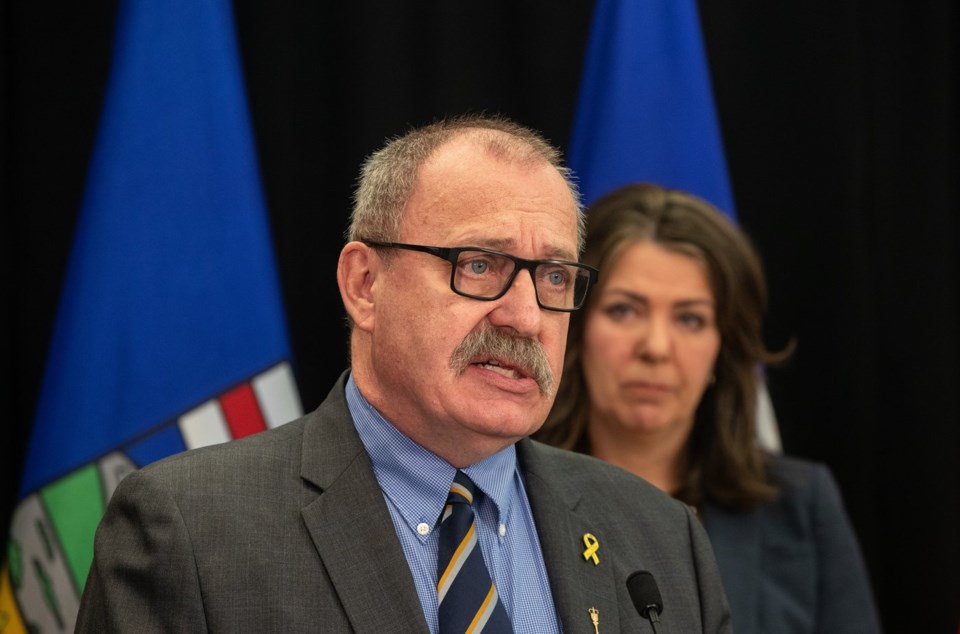EDMONTON — The Alberta government has published a new accessibility design guide, marking the first major update to the document since 2017.
The guide is meant to help architects, city planners, the construction industry and the public understand and implement building rules to make public and private spaces more accessible for those with mobility challenges and disabilities.
The guide doesn't contain new building rules, but it does formalize a number of building code changes made earlier this year.
Municipal Affairs Minister Ric McIver, whose portfolio includes the provincial building code, said in an interview that the changes include new requirements related to curb ramps, companion seating, power doors and signage.
"When you talk about people with mobility issues or disabilities ... it's a whole range of things," McIver said. "Some of those disabilities or challenges are hearing, some are sight, some are physical mobility. And they all deserve to fully participate in society.
"These evolving standards are designed to make that better."
Also new to Alberta's building code, and the design guide, are requirements to have things like elevator controls provide auditory confirmation that they've been activated.
Universal washrooms are also to feature change spaces with adult-sized change tables.
Water bottle filling stations are to be located in buildings with barrier-free travel paths.
Similar to exit signs, accessibility signs are also required to point out barrier-free building entrances, washrooms, elevators and parking spaces.
McIver said while the changes will be helpful to some, more can be done, especially because existing buildings don't need to be updated.
"If a building was built five years ago or 50 years ago, the building was built according to the standards of the day," he said. "You can't go knocking down every 10-year-old building, because it doesn't hit the 2024 standard."
"I don't blame people with mobility issues or other disabilities for being impatient with it, but we are genuinely trying to move forward and make things better on a constant basis."
Zachary Weeks, an Edmonton-based accessibility consultant and advocate, said not requiring existing buildings to meet new standards significantly limits the impact the standards have.
"I certainly empathize," said Weeks, who uses a wheelchair. "I want to be fair in saying that there's going to be some buildings that are not able to be updated as well as others."
But Weeks said it's something Alberta could enforce or facilitate through legislation.
"We're (one of) the last two provinces (that don't have accessibility legislation)," he said. "Therefore all of the accessibility related requirements or guidelines are all very piecemeal."
Accessibility legislation is something the government has said is a possibility.
Last year, Alberta's Office of the Advocate for Person's with Disabilities undertook public engagement on what potential accessibility legislation should include.
Alysha Wishloff, press secretary for Community and Social Services Minister Jason Nixon, said in an email the ministry is reviewing the results of that engagement effort.
"Alberta’s government wants to make sure any changes to improve accessibility across the province are well-informed and will continue to take a thoughtful approach to improving accessibility," Wishloff said.
"Alberta’s government is committed to working with the disability community to ensure Albertans with disabilities are supported and live fulfilling lives."
When it comes to some of Alberta's new accessibility standards, specifically signage, Weeks said he thinks they're a step in the right direction.
"Whenever I enter a building, I don't know where the wheelchair accessible washroom is. I don't know where the elevators are. So it's a constant journey of finding out where things are to meet your needs," he said.
"I think that's a great addition."
Given the new guide was published Friday, Weeks said he plans to review the new changes thoroughly.
McIver said it's likely there will still be holes in Alberta's accessibility standards, but it's a work in progress.
"I get to talk to people with disabilities from time to time. And let me say this: I've never yet talked to one that says the standards are good enough," he said.
"That's a good reminder for me that we need to constantly be making improvements."
This report by The Canadian Press was first published Oct. 25, 2024.
Jack Farrell, The Canadian Press

